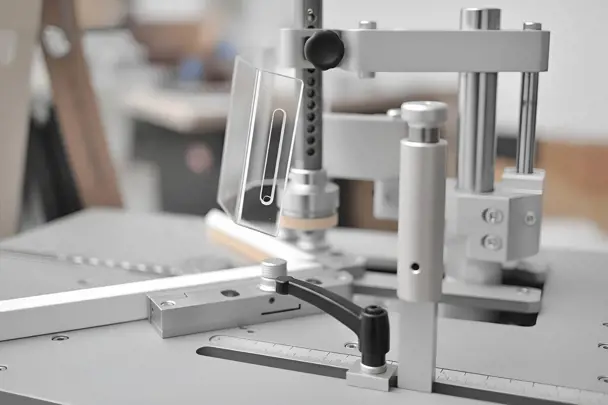In an era where technology seamlessly integrates with our daily lives, the way we preserve and display cherished memories has evolved. Picture frames have long been a timeless method of showcasing precious moments. In fact, one of the earliest known frames was a wooden frame found in an Egyptian tomb dating back to AD 50-70. Hand-carved, wooden frames that we recognise today emerged much later, during the 12th and 13th centuries.
In recent years, the debate between digital and traditional frames has taken centre stage. As a leading picture framing retailer in Australia, Frame Today understands the importance of helping customers choose the perfect medium to cherish their memories. In this comprehensive guide, we'll explore the key differences between digital and traditional frames, shedding light on the pros and cons of each while answering crucial questions like how do digital picture frames work and delving into the realm of digital art frames.
Traditional Picture Frames: A Classic Touch
Traditional picture frames have been a staple in households for generations, providing a classic and timeless way to display photographs. Crafted from a variety of materials, including wood, metal and plastic (we don’t recommend plastic), these frames add a touch of warmth and familiarity to any space. The tactile experience of handling physical prints and arranging them in beautifully designed frames appeals to those who appreciate the tangible nature of traditional methods.

Pros of Traditional Frames
- Aesthetic Appeal: Traditional frames often possess a timeless and elegant design, enhancing the overall aesthetics of the displayed photographs.
- Cost-Effective: Traditional frames are generally more affordable than their digital counterparts, making them an attractive option for budget-conscious consumers.
- No Power Dependency: Traditional frames don't require electricity, ensuring that your cherished memories remain on display even during power outages.
Cons of Traditional Frames
- Limited Display Options: With traditional frames, you're limited to a single static image unless you manually swap out prints, which may become tedious over time.
- Space Constraints: Displaying multiple photos in a limited space can be challenging with traditional frames, especially for those with extensive photo collections.
Digital Picture Frames: A Modern Marvel
Digital picture frames represent the contemporary face of photo display technology. These frames come equipped with LCD screens, allowing users to cycle through a slideshow of their favourite images. The transition from one photo to another can be customised to suit individual preferences, breathing new life into the way we experience and share memories.

Pros of Digital Frames
- Dynamic Display: Digital frames offer a dynamic display, allowing users to showcase an entire album of memories in a slideshow format.
- Remote Control and Connectivity: Many digital frames come with remote controls and connectivity options, enabling users to update and manage their photo displays effortlessly.
- Customisation: Users can easily customise the duration of each photo display, transition effects and even add music to create a more immersive experience.
Cons of Digital Frames
- Power Dependency: Digital frames require electricity to function, which may be a drawback during power outages or in locations with limited power sources.
- Initial Cost: Digital frames tend to be more expensive upfront compared to traditional frames, potentially discouraging budget-conscious consumers.
- Learning Curve: Some users may find the setup and customisation of digital frames to be a bit complex, requiring a learning curve for optimal use.
How Do Digital Picture Frames Work?
Digital picture frames operate through a combination of hardware and software components. The frame typically includes an LCD screen, internal storage or memory card slots for photo storage and a processor to manage the display. Users can transfer photos to the digital frame through USB connections, memory cards or wireless options like Bluetooth and Wi-Fi. Once the photos are loaded, users can customise the display settings, creating a personalised slideshow experience.
Digital Art Frames: Elevating Display to an Art Form
As technology continues to advance, the concept of digital art frames has emerged, blurring the lines between traditional art and modern technology. These frames are designed to showcase digital artworks, transforming any space into a virtual gallery. With features like high-resolution displays and internet connectivity, digital art frames allow users to curate their own digital art collections and even explore curated online galleries.
Traditional or Digital Frames: The Choice is Yours

In the eternal debate of digital vs. traditional picture frames, the choice ultimately comes down to personal preferences and lifestyle. Traditional frames offer a classic, tactile experience, while digital frames provide a dynamic and modern approach to displaying memories.
As a customer-focused picture framing retailer in Australia, Frame Today recognises the importance of catering to diverse preferences, offering a wide range of traditional picture framing options. Digital frames tend to be sold through electronics retailers and online.
Whether you opt for the timeless charm of a traditional frame or the cutting-edge technology of a digital frame, the goal remains the same – to cherish and celebrate the moments that matter most. As we navigate the intersection of nostalgia and innovation, the choice between digital and traditional frames becomes a testament to our individuality and the unique ways we choose to preserve our memories in the modern age.



